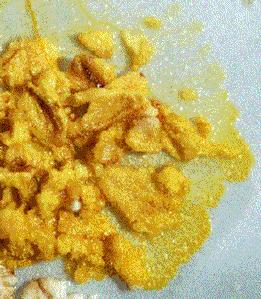Write4U
Valued Senior Member
Wasn't that fun? It was as if lightning struck when you saw that word, no?...Enlightening.
EB
Last edited:
Wasn't that fun? It was as if lightning struck when you saw that word, no?...Enlightening.
EB

Plasmodial slime molds
, like Physarum shown here, are basically enormous single cells with thousands of nuclei. They are formed when individual flagellated cells swarm together and fuse. The result is one large bag of cytoplasm with many diploid nuclei. These "giant cells" have been extremely useful in studies of cytoplasmic streaming (the movement of cell contents) because it is possible to see this happening even under relatively low magnification. In addition, the large size of the slime mold "cell" makes them easier to manipulate than most cells.
Abstract
The plasmodium of slime mold Physarum polycephalum behaves as an amorphous reaction-diffusion computing substrate and is capable of apparently ‘intelligent’ behavior. But how does intelligence emerge in an acellular organism?
Through a range of laboratory experiments, we visualize the plasmodial cytoskeleton—a ubiquitous cellular protein scaffold whose functions are manifold and essential to life—and discuss its putative role as a network for transducing, transmitting and structuring data streams within the plasmodium.
https://www.ncbi.nlm.nih.gov/pmc/articles/PMC4594612/Through a range of computer modeling techniques, we demonstrate how emergent behavior, and hence computational intelligence, may occur in cytoskeletal communications networks.
IMO, this is a beautiful example of a very early specific evolutionary process, bridging the sentient bio-chemical world to the emerging conscious bio-chemical world. Hive-minds?Furthermore, we present bespoke cellular automata and particle swarm models for the computational process within the cytoskeleton and observe the incidence of emergent patterns in both. Our work grants unique insight into the origins of natural intelligence; the results presented here are therefore readily transferable to the fields of natural computation, cell biology and biomedical science. We conclude by discussing how our results may alter our biological, computational and philosophical understanding of intelligence and consciousness.
https://en.wikipedia.org/wiki/Flagellum#Structure_and_compositionThrough use of their flagella, E. coli is able to move rapidly towards attractants and away from repellents, by means of a biased random walk, with 'runs' and 'tumbles' brought about by rotating its flagellum counterclockwise and clockwise, respectively. The two directions of rotation are not identical (with respect to flagellum movement) and are selected by a molecular switch
river said: ↑
So how do we find , the BEST explanation ?
Other than being creative in any language ?
Is by objective observation of all Life and energy/matter
Is that any kind of argument?!
Seems like a non-sequitur to me.
In other words, does the fact that people are creative with language, and that they need to be creative, justifies a priori anything you want to say just because you're being creative with language?!
You're being very creative and very illogical.
EB
